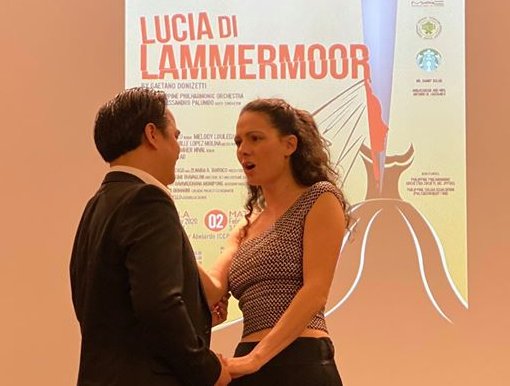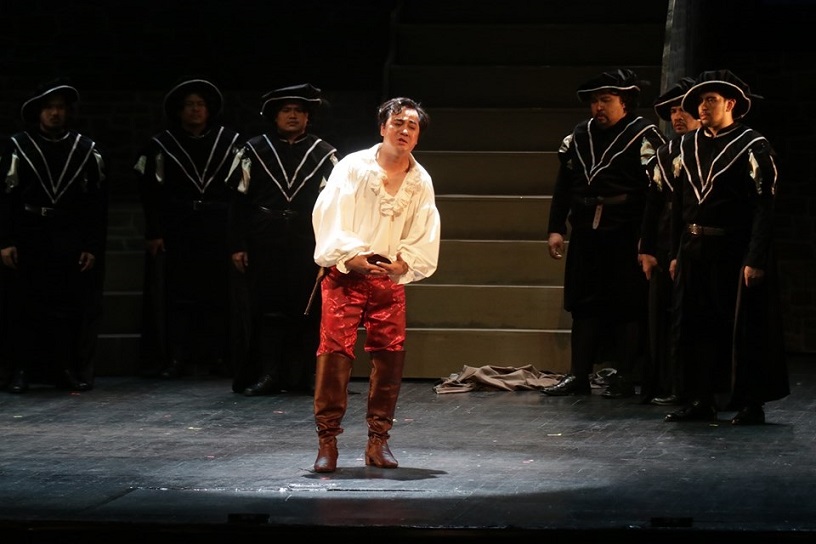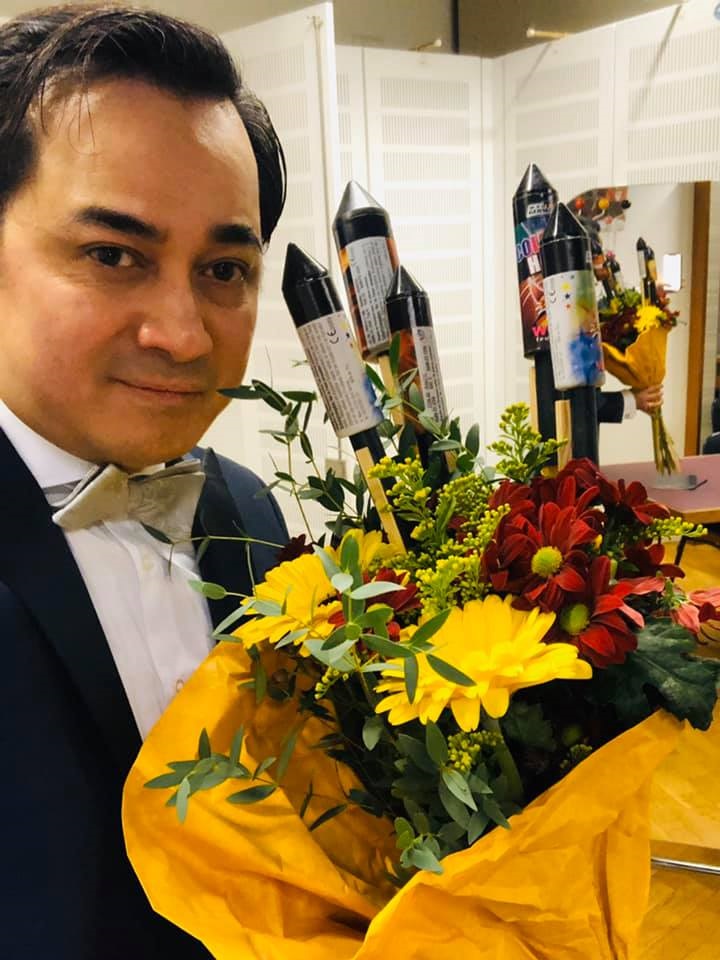
Arthur Espiritu:
the new Edgardo in the CCP production of Lucia.
When Donizetti’s Lucia di Lammermoor opera unfolds at the Cultural Center of the
Philippines January 30 with French soprano Melody Louledjian in the
title role, it will also showcase the vocal artistry of Filipino
tenors led by Arthur Espiritu who is singing the role of Sir Edgardo
of Ravenswood for the second time after his much-acclaimed South
Korean debut last year.
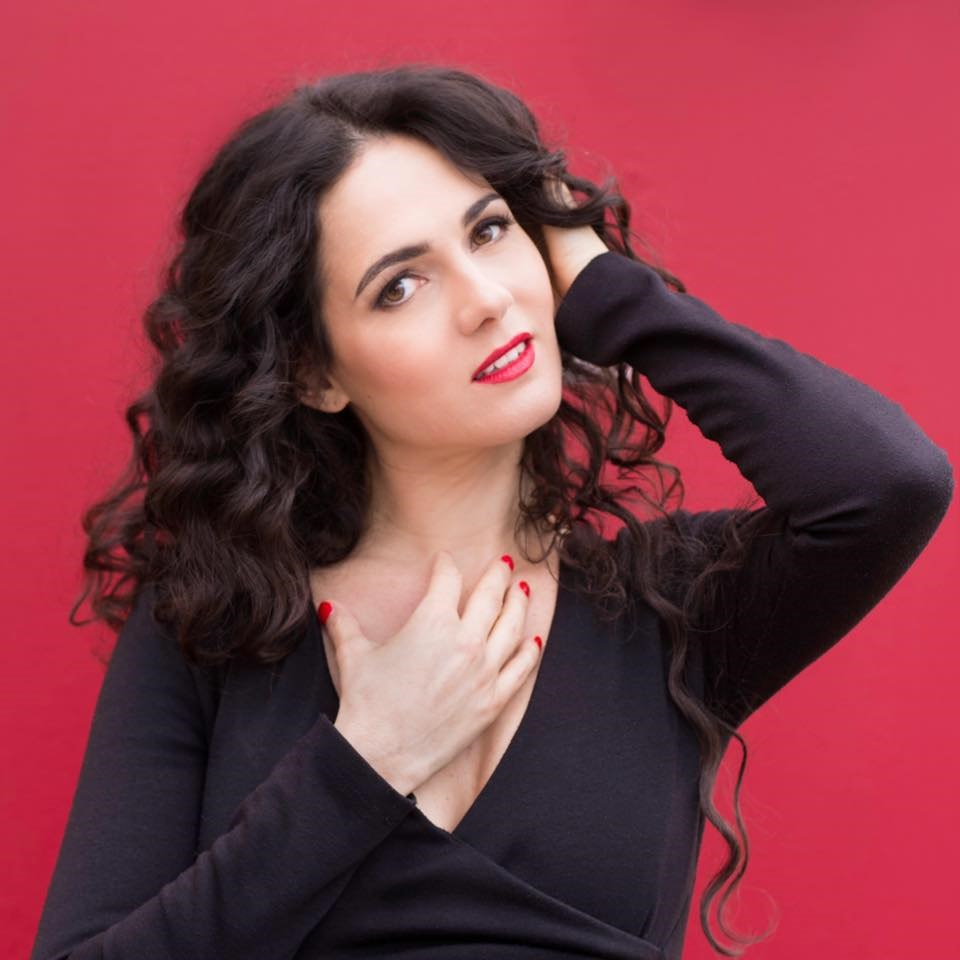
Melody Louledjian: the new CCP Lucia on January 30.
Before Espiritu,
other Filipino tenors equally shone in the role.
Noel Velasco,
winner of the Pavarotti competition in Philadelphia, sang four
performances as Edgardo in a production of the Welsh National Opera
under the baton of Sir Charles Mackerras.
The Ilonggo tenor
Otoniel Gonzaga sang the same role in Ohio and Boston in the United
States and with Graz Opera in Germany.
The first known
performance of
Lucia di Lammermoor was at Tondo Theater on November
26, 1886. Another foreign opera company staged the same opera two
years later in the same theater only to resurface again some nine
years later in Zorilla Theater in Quiapo in 1897.
Moreover, the
opera was heard with Filipino cast at the Manila Metropolitan Theater
as early as 1933, two years after its inauguration.
As if to showcase
an opera loving Manilans, the 1931 Met inauguration was opened by an
aria M’appari from Friedrich von Flotow’s opera, Martha sang by
the great Italian tenor Tito Schipa.
The historic
occasion was .graced by then senate president Manuel L. Quezon,
interim American Governor General George C. Butte, then speaker of
the house of representatives Sergio Osmena, Sr., Manila Mayor Tomas
Earnshaw, University of the Philippines president Rafael Palma, the
Archbishop of Manila, officers of various Chambers of Commerce from
different countries, and members of the so-called Manila’s 400.
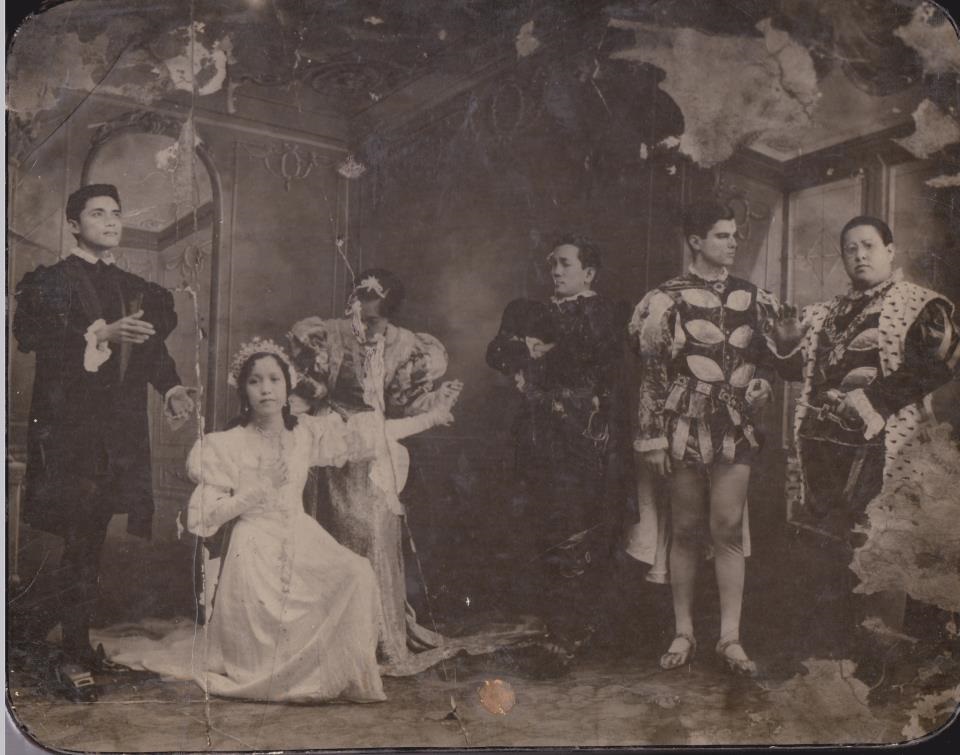
A photo from the
1933 production of Lucia di Lammermoor at the Manila Metropolitan
Theater featuring the Lucia of Nelia Manalo (kneeling) and the
Edgardo of Octavio Cruz (third from right).
The 1933 Met
performance featured the Lucia of Nelia Manalo Concordia, the Edgardo
of Octavio Cruz, Carmen Bernabe as Alice, the then 18-year old Luis
Garchitorena as Arthur, Tomas Earnshaw as Enrico with bass Jose
Galicano.
The Donizetti
opera was last seen at the CCP in 1976 in its Filipino version with
the Lucia of Editha Hernandez in a production of Centro Escolar
University with the CCP Philharmonic Orchestra under the baton of
Alfredo Buenaventura. It featured Gamaliel Viray as Enrico and bass
baritone Emmanuel Gregorio as Raimondo.
Way back in 1948,
another version of
Lucia di Lammermoor was heard at the UST Gymnasium
with the Lucia of Maestra Mercedes Matias Santiago who has sung the
role more than 20 times. Lord Arthur Bucklaw was the then dashing
tenor Aristeo Velasco.
Singing Lord
Bucklaw at the coming CCP production is tenor Ivan Niccolo Nery who
sang an infinitely moving Flower Song (Carmen) in one Manila Pianos
concert series.
Born July 11,
1902, Octavio Cruz — who sang the lead tenor role of
Lucia di
Lammermoor
at the Manila Metropolitan Theater– is Pasig’s
renaissance man who was also the frequent Alfredo (Traviata) of
Manalo and Santiago.
A discovery of
Emilia Reysio Cruz at the UP College of Music, Cruz sang in the
chorus of
Aida in 1932 with Jose Barredo as Radames.
A year later, he
was Alfredo in Traviata announced with much fanfare in El Debate.
Came opening night, he got good reviews from La Opinion and Sunday
Tribune. He was also Manrico in
Il Trovatore opposite soprano Angela
Asuncion de Agaton, Turrido in
Cavalleria Rusticana with the same
soprano, the title role in
Faust with the distinguished bass Jose
Mossesgeld Santiago opposite Manalo and Aida (as Radames) again with
Agaton.
Like Santiago,
Cruz studied with the pioneers of opera education in the Philippines
namely voice teacher Victorino Carreon and considered the first opera
impresario, Don Ramon Javier.
After Cruz’s
triumphant debuts in
Traviata, Lucia di Lammermoor, Trovatore, Faust,
Aida and Cavalleria Rusticana, Pasiguenos may be right in claiming he
was indeed the first Filipino Caruso.
Indeed, his vocal
talent came at the time of the beginning of the golden age of opera
in the Philippines from the Manila Grand Opera House to the Manila
Metropolitan Theater and then on to the FEU Auditorium.
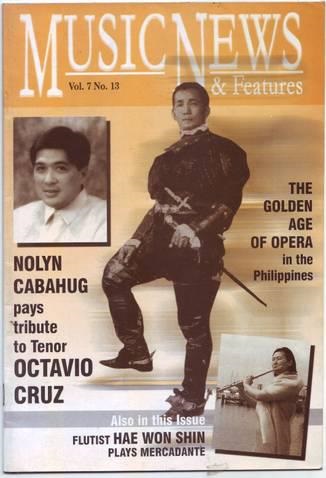
Tenor Octavio
Cruz as he appears on the cover of Music News in a special tribute
concert at Pasig Museum.
Writer Federico
Licsi Espino described the years of 1930 to 1943 as “an auspicious
era for opera in the Philippines. The era was marked by fruitful
musical season. It is unexcelled in polished performances and a
vitality of singing style. There is nothing like it in the whole
history of opera in the Philippines.”
When Cruz passed
away on June 20, 1977 (this is the same month and year the opera icon
Maria Callas died in Paris), the Pasig Cathedral was full of music
lovers and opera singers from Manalo to Santiago and many others.
With Cruz’s
passing away in 1977, the country lost one of the last few links to
the golden age of opera in the country.
Others in the
CCP production of the Donizetti opera include Korean baritone
Byeong-In Park as Lord Enrico Ashton, Lord of Lammermoor; Shi Zong,
bass, as Raimondo Bidebent, a Calvinist chaplain; Alessandro Palumbo,
conductor; Vincenzo Grisostomi Travaglini, director; and Prince
Sisowath Ravivaddhana Monipong, assistant director.
The 2020 Lucia di
Lammermoor
is a coproduction with the Philippine Italian Association,
Filipinas Opera Society Foundation and Rustan’s.
